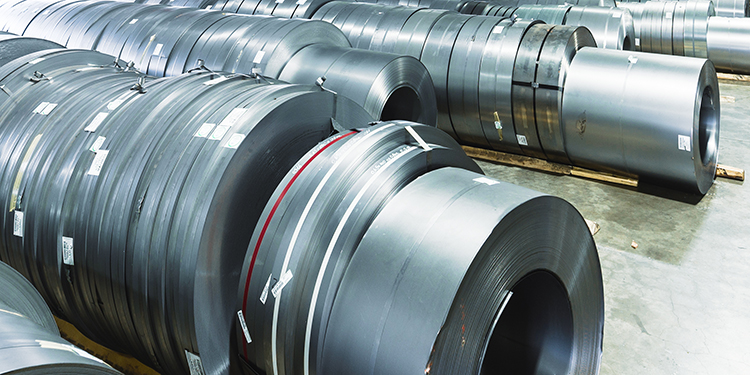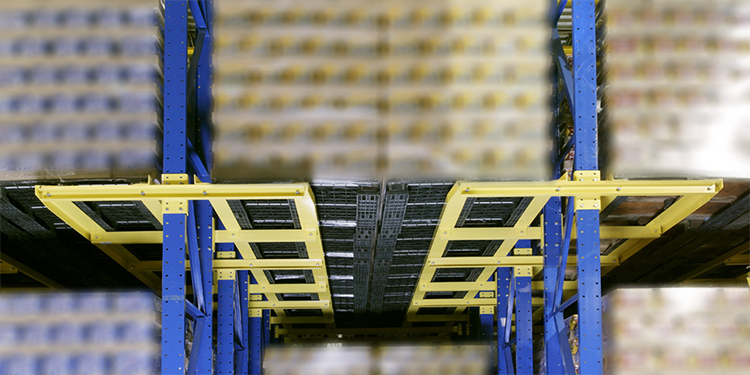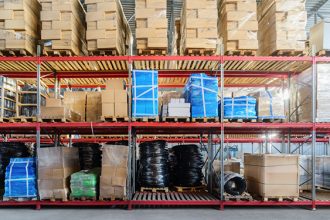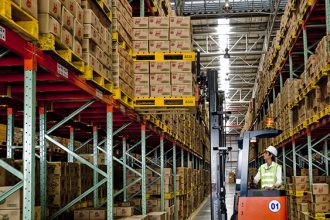Key Takeaways From RMI’s MODEX 2024 Pallet Racking And Automation Presentation

While most warehousing and distribution facilities have industrial steel storage rack systems, far fewer have automated equipment. However, as workforce availability continues to be a challenge, operations are increasingly assessing automated solutions. “Pallet Racking Systems and Design for an Automated Future,” an education session hosted by members of the Rack Manufacturers Institute (RMI), took a closer look at the intersection of the two. Here are the key takeaways from RMI’s MODEX 2024 pallet racking and automation presentation.
Comparing Pallet Rack Steel
John Schmidt, CEO of RMI member Rack Builders, kicked off the session with an overview of various rack systems. He first explained the differences between roll form steel and structural steel rack, noting that some suppliers offer one or the other—or both.
“Roll form rack starts as a coil of steel. The coil is slit and then rolled or formed into a specific shape. Each rack manufacturer has their own specific shape,” he said. “Structural steel rack is made with hot rolled steel shapes.”

The difference in manufacturing methodology results in different attributes for each type of rack.
“Roll form rack is generally thinner. That means it has a lower initial upfront cost for manufacturing, for the material, and for installation,” Schmidt noted. “It’s typically put together with a rivet or snaps together, making it easy to install and adjust.”
Conversely, “structural steel rack is generally heavier and has a higher load capacity,” he continued. “It’s put together with nuts and bolts, making it a little more durable but more expensive to install. It also stands up to abuse, like from that fork truck going in and out of the rack.”
Overview of Rack Designs
Schmidt also discussed several fundamentals in rack design. Among them were the concepts of density and selectivity, which he explained are inversely related.
“Density is how much of a warehouse is filled with actual pallets of product as opposed to aisle space,” he noted. “Selectivity is the availability of any one pallet from an aisle. As density increases, selectivity decreases, and vice versa.”
Single pallet deep selective pallet rack offers the highest accessibility to pallets of product. From there, different pallet racking designs increase in storage density to accommodate one or more additional pallets. These include double-deep, pushback, pallet flow, drive-in, and pallet shuttle. Each offers increased storage density with less selectivity.

Another key concept refers to pallet and inventory movement. “First-in/first-out, or FIFO, means the first pallet that’s put into a dense system is the first pallet taken out. Last-in/first-out, or LIFO, means that the last pallet put into the system will be the first pallet removed,” Schmidt explained.
Pallet shuttle systems are what Schmidt called the latest in the evolution of conventional pallet racks. These semi-automated, dense rack systems represent a bridge between pallet racking and automation, as they utilize motorized carts—called shuttles—to retrieve and place pallets in the system.
Recommendations for Successful Pallet Racking and Automation Integrations
Arthur Fendel, Vice President of Sales and Engineering at RMI member STOW, offered advice to operations transitioning from conventional to automated systems.

“The adoption of automation requires a cultural change, because it will affect all employees,” he noted. “Therefore the company needs to take ownership, understand the system, and communicate those changes to their employees before the system’s implementation.”
Fendel discussed how traditional pallet rack systems integrate with the increasing levels of automation deployed in warehousing.
“Automated storage and retrieval systems, or AS/RS, offers high speed product retrieval with a high rate of accuracy,” he said. “These systems are also safer because employees don’t need to drive or walk around the building. Instead, the goods are coming to the person.”
AS/RS isn’t the only option that combines pallet racking and automation. Fendel pointed to autonomous mobile robots (AMRs) and automatic guided vehicles (AGVs).
“AMRs or AGVs are ideal entry level automation, especially for operations using selective rack,” he said. These bots follow a picker through the operation to collect ordered items. Or they can bring racks or pallets of inventory to operators at workstations.

Benefits of Integrating Pallet Racking and Automation
Jonathan Hirst, Vice President and General Manager of RMI member North American Storage Equipment, wrapped up the session. He explained the different factors involved in calculating the return on investment (ROI) from an automation acquisition.
“When talking ROI, the first place that companies jump to is eliminating people. If the automation eliminates 10 people with an average salary of $50,000, then they’ve achieved a $500,000 ROI. That barely scratches the surface,” shrugged Hirst.
Instead, he advised companies to look beyond headcount at the other benefits of integrating pallet racking and automation. These include better inventory accuracy, higher picking efficiency rates, and scalability to meet peak demand.
“Automation creates the opportunity to implement artificial intelligence, AI, to preload systems ahead of high demand and peak periods,” he said. “ROI also has to account for throughput improvements and safety improvements. Automation can reduce the number of accidents which lowers insurance premiums.”
Find the Right Partner to Guide Pallet Racking and Automation Integration
In concluding the presentation, Schmidt, Fendel, and Hirst agreed that companies seeking to integrate pallet racking and automation should first find the right partner for guidance. A good place to start, said the trio, is with RMI. RMI’s members are the industry’s leading suppliers of industrial steel storage racks and related structural systems. are available for consultations, insights, and recommendations. RMI also recently hosted an online Tech Talk on this topic. Visit mhi.org/rmi for additional details.


